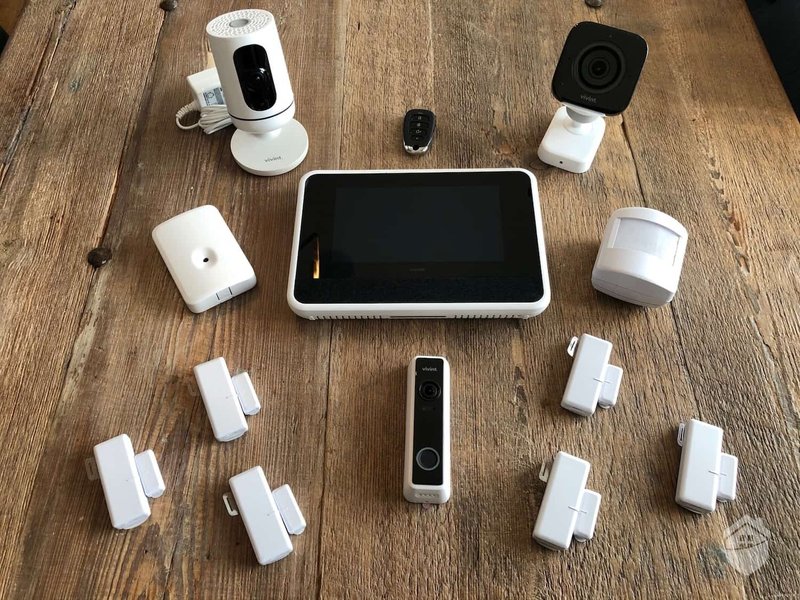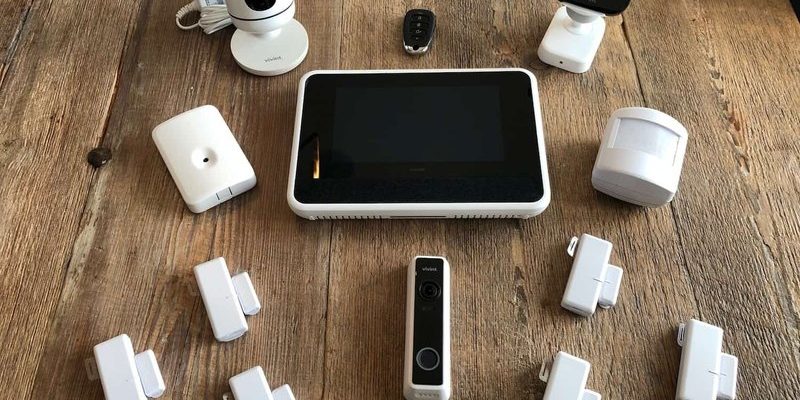
Vivint’s smart remote isn’t just a regular old TV clicker. It’s designed to sync with your Vivint Smart Home system, controlling everything from alarm modes to door locks. It feels a bit like having a magic wand for your house. But, as magical as it seems, electricity is still the backbone of all those “smart” tricks. So when the power goes out, does the Vivint Smart Remote hang in there, or does it tap out with the rest? Let’s get into the nuts and bolts—without assuming you’re an expert.
How the Vivint Smart Remote Works: The Basics
Let me explain how this clever little device fits into your smart home setup. The Vivint Smart Remote doesn’t work alone—it’s paired (or “synced”) with your Vivint control panel. This panel acts like the command center, talking to your devices and sending out signals. Think of it as the conductor of the orchestra, and the remote is just one of the players following its lead.
The remote itself runs on batteries—usually two AAAs—so it doesn’t need to be plugged in. This sounds promising for power outages, right? But here’s the thing: while the remote can turn on and send commands, those commands still have to be picked up by the smart hub or panel, which *does* rely on power to some extent.
If you’re pairing the remote for the first time, you follow a simple sync code process. But day-to-day use is more about toggling lights, arming your security system, or unlocking doors remotely—tasks that might hit a roadblock if the power’s out and your panel isn’t running on backup.
What Happens When the Power Goes Out?
You might be wondering—if my Vivint Smart Remote uses batteries, shouldn’t it keep working during an outage? Honestly, it’s a bit of a “yes, but” situation. The remote itself will turn on just fine. The real question is what it actually controls when the main hub loses power.
Vivint control panels usually come with a backup battery built in. If the power cuts out, most panels keep running for anywhere from 4 to 24 hours. During that time, your Smart Remote can still sync with the system. You’ll be able to arm and disarm the security, open a smart lock, or trigger an alert because the panel is still alive in “power outage mode.”
But there are limits. If your backup battery drains, the panel shuts off—and the remote loses its “ears.” It can send all the commands it wants, but nothing is there to listen. Also, some connected devices (like WiFi-only cameras or certain smart plugs) might not have their own battery backup, so the remote can’t control them during an outage, even if the panel is still limping along.
Battery Life in the Vivint Smart Remote
Let’s talk about the remote itself. Most Vivint Smart Remotes use standard AAA batteries, which last anywhere from six months to a year, depending on how often you use the remote. That’s really convenient. During a blackout, you won’t need to scramble for a charger or worry that your remote is dead—unless you *already* needed new batteries.
Here’s why this matters: Unlike some “universal” remotes that need to be recharged or plugged into a base station, the Vivint Smart Remote is fully portable and cordless. If there’s a power failure, you can still operate whatever backup-powered devices are available. This is a smart design for emergencies, honestly.
But remember, replacing the remote’s batteries regularly is important. If you’ve ignored the low-battery warning for weeks, you might find yourself out of luck at precisely the worst time. A little story—I once waited too long, and ended up digging through drawers for fresh batteries with a flashlight. Lesson learned.
How Vivint Smart Remote Syncs and Pairs During Outages
Syncing and pairing are words you’ll see a lot in smart home setups. When you first set up your Vivint Smart Remote, you enter a special code on the control panel and follow prompts to pair the devices. This process usually requires the main panel to be online and functioning.
During a blackout, you can *use* the remote as long as the panel is on battery backup, but you can’t perform a new sync or reset. That’s because those operations often require a full system reboot and active network connection for security reasons.
If you ever need to troubleshoot or re-pair the remote after a power outage, wait until your power and network are restored. Forcing a sync or reset during an outage is a recipe for headaches—think of it as trying to fix a computer during a thunderstorm, only with fewer sparks and more frustration.
What Can the Smart Remote Control While in Power Outage Mode?
Now, let’s break this down practically. When the system is running in power outage mode (on backup battery):
- Security features like arm/disarm usually work because the panel is still powered.
- Smart locks with their own batteries can still receive commands from the panel, so the remote can unlock doors.
- Alerts, alarms, and basic automations should function, depending on your settings and which devices have backup power.
- Wireless cameras or plugs without backup batteries won’t respond, since they need ongoing electrical power.
Pro tip: Imagine your smart home as a relay race. The remote can pass the baton, but if the next runner (the hub, device, or camera) is asleep, the race ends right there.
It’s worth comparing this to a universal remote you might use for a TV. Those only need batteries and line of sight—if your TV is off, no remote can turn it back on without power. The Vivint remote is similar; it needs the “brain” (the panel) to be up and running, even in a low-power state.
Troubleshooting Vivint Smart Remote in Power Outages
Power outages are when you want things to work without fuss—but tech doesn’t always cooperate. So, what if your remote isn’t working as expected while the power is down?
First, check if the control panel has battery power left. Most panels have a small display showing battery status. If the panel is off, the remote won’t function—that’s your sign the backup juice is gone.
Second, make sure the device you’re trying to control has its own battery or alternative power source. For instance, door locks with dead batteries won’t budge, no matter how many times you press the remote.
If you’re having issues with syncing or the remote seems “lost,” don’t try to reset or pair it again during an outage. Wait for full power, then run the troubleshooting steps:
- Replace AAA batteries in the remote if they’re low.
- Check the control panel’s power and network connection once the power is back.
- Follow the setup code and sync process as described in the Vivint manual.
Most problems resolve with fresh batteries and a stable connection. If not, Vivint support can walk you through a more detailed reset when things are back to normal.
Comparing Vivint Smart Remote to Other Remotes During Outages
Here’s something to consider: Not all remotes handle power failures the same way. A universal remote for a TV or sound system is useless during an outage because those devices need full power. The Vivint Smart Remote is a bit more clever, since it’s tied into a system with built-in backup and some battery-powered gadgets.
Still, it’s not a magic fix. If you want *total* reliability, you’d need to look at alternatives like:
- Manual keys for smart locks.
- Physical light switches.
- Standalone battery-powered alarms.
The main appeal of the Vivint system is integration—it’s seamless during normal operation and holds up fairly well during short outages. But it relies on its hub’s battery backup, and there’s always a limit to how long that’ll last. If you live in an area with frequent long blackouts, consider extra batteries, manual backups, or even a small generator for peace of mind.
Preparing Your Vivint Smart Remote for Power Outage Mode
Here’s the thing: preparedness makes all the difference. If you want your Vivint Smart Remote to work in power outage mode, a few habits can save you stress.
- Test your control panel’s backup battery twice a year—just like you’d check smoke detectors.
- Keep spare AAA batteries handy, not buried behind mystery kitchen gadgets.
- Double-check that key devices (like door locks) have fresh batteries too.
- Know your backup battery’s expected lifespan. If it’s more than a few years old, consider replacing it.
Honestly, a few minutes of prep can save you a lot of scrambling during a blackout. It’s the small things that add up—like remembering where you put your flashlight or not ignoring that low-battery chirp.
Wrapping Up: Does Vivint Smart Remote Work In Power Outage Mode?
So, does the Vivint Smart Remote work in power outage mode? The short answer: yes, *as long as the core system is still running on battery backup*. The remote uses batteries and stays ready for action, but it depends on the control panel and each device’s power source. You can expect to operate security features and most battery-powered smart locks, but other plugged-in gear might go silent.
Preparation is your best friend—check batteries, know your backup limits, and don’t try to re-sync or reset anything until full power is restored. With a little planning, your Vivint Smart Remote won’t leave you in the dark, even when the lights go out. And honestly, in a blackout, that peace of mind is worth every bit of extra effort.
